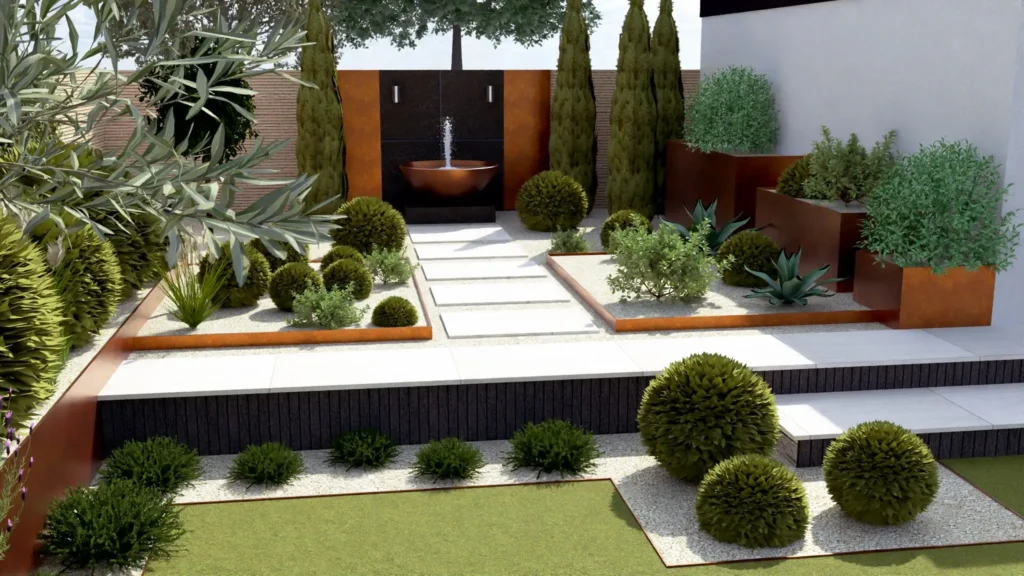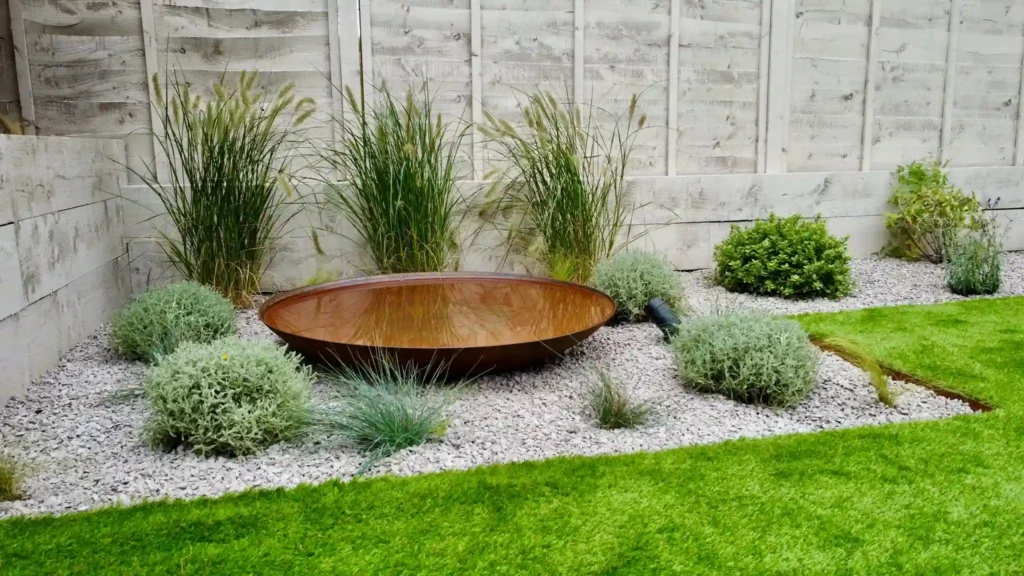Improving your estate by designing a one-of-a-kind garden is simply fulfilling. Not only does a well-planned garden provide comfort, beauty, and value, a garden also helps give a nice, peaceful refuge, a place to enjoy and grow plants, and a location to hold family functions.
You do not need to be a professional to start designing one. With some creativity, careful planning, and a little work, you can. This tutorial will inform you how to go about creating your garden step by step. Learn how to lay down a plan, select plants, and add final touches.

What is Garden Design?
This refers to the planning arrangements made regarding a garden and how to make this valuable open space functional. This value is derived by ultimately determining the type of plants to be grown as well as the location of pathways, seating, and flowerbeds.
A well-thought-out garden will take into account the extent of sunlight, the type of soil, the amount of water and the intended activities to be performed in the space. With thoughtful use of design, a small, covered backyard and even a large lawn can be made into a true reflection of your character and your way of life.
Having Your Garden Designed
A well thought-out garden has functions and provides for the needs of and enriches life. Here’s how:
- Beauty – Transforms your external spaces into idyllic and tranquil areas.
- Restoration of life and well-being – The designed garden, thought out and planned, provides an encouraging and motivational environment for activities like reading.
- Spatial Increase – Designed well, the garden increases the value of the property by 15%.
- Ease of Relaxation – Having the garden provides the required environment and space for activities like family interactions, mediation and relaxation.
- Environmental Ecological Balance of the Environment – Designed and planted gardens increase the circulation of air healthy and clean.
A 5 Step Guide to Your Garden
Step 1: Understanding Your Area
Begin by taking the time to watch and observe your garden.
You will understand the:
- Size and shape – Is it rectangular, square, or irregular?
- Light – The sun and shade value in different areas.
- Soil: Is the soil sandy, clay, or loamy?
- Wind: Is the air soft or fast?
Step 2: Determine Your Style
A functional garden should have an identifiable focus. Here are some:
- Simple Garden – Simple patterns with open spaces, clean walks and little vegetation.
- Cottage Garden – A flower-filled vision with some stones and a rustic charm.
- Tropical Garden – Abundant greenery with large and broad-leafed plants.
- Japanese Garden – Calm and balanced atmosphere with rocks and water.
- Desert Garden – For dry places, it is gravel with cacti and other succulents.
Knowing your style in the beginning helps in the right selection of materials and plants, and it keeps your results consistent.
Step 3: Plan the Layout
It is time to move on to the next step in designing your garden, which is its structure. Split the space into the following zones:

- Entrance Area – A path and perhaps an archway to the area.
- Seating Zone – Benches or other outdoor furniture.
- Planting Beds – Where your flowers, vegetables or herbs will go.
- Lawn Area – Important space for kids or pets to run and play.
- Decorative Corners – Area for sculptures, pots, or fountains.
Wide enough paths for walking, a clear flow between areas, and a gentle balance in the various zones will promote the best activity.
Step 4: Choose Plants
To animate your outdoor space with vibrant charms, choose the right combination of trees, shrubs, flowers, and ground covers to capture the essence. Scalers will climb on your fence or wall, and dead surfaces will be covered.
Consider your climate, soil, and sunlight so your plants thrive. Group plants with similar water and light requirements together.
Step 5: Adding Pathways and Borders
Pathways make different zones in your garden accessible to one another. For a natural look, use stone, gravel, or wood. New pathways can also be created using bricks. Borders also made of bricks, rocks, or plants can provide a neater and more organized look to your garden and flower beds.
Step 6: Adding Seating and Accessories
To truly enjoy your garden, you need a designated space within it to relax, so incorporate a bench, swing, or small patio set.
For added beauty, place garden lights to illuminate the area and create an enchanting ambience, use pots and planters, add water features like a small pond or fountain, put up bird feeders or birdhouse sculptures, and embellish the space in any other way you see fit. These small details provide a finished look to your garden.
Step 7: Maintenance
To keep the beauty of a garden, regular upkeep is necessary. Your design should account for adequate access to allow for easy watering and general cleaning. Use mulch to block weeds, and install drip irrigation if you can.
If you are a beginner, an easy body of work plants such as marigolds, jasmine, roses or ferns are a perfect start.
Small Garden Design Tips
If you lack a large garden space, you can create the illusion of a bigger space using clever design. This can be achieved by horizontal and vertical planters, using mirrors to create reflections and light and space, and by using light colored paving stones.
Select smaller plants and reduce the number of oversized trees. Choosing one focal point is best, whether that be a sculpture or a flower bed.
These suggestions help to create an open and appealing atmosphere, even with limited space.
Design Tips for Large Gardens
With additional space, the area can be organized into a few different zones.
- One for planting vegetables or herbs.
- One for outdoor dining.
- Another for relaxation or play.
Incorporate trees for shade, curved pathways, and differing heights of plants to create a sense of balance within the space.
Common Mistakes to Avoid
- Without an overall plan, too many varieties will be planted.
- Ignoring the type of sunlight and soil present for planting is a mistake.
- Inadequate space for movement or furniture will ruin the flow of the design.
- With proper planning, maintenance and irrigation setup will be set.
Avoiding these mistakes guarantees your garden will be healthy and pleasurable to enjoy for many years.
Frequently Asked Questions (FAQs)
Can I design my own garden, or do I need a landscape designer?
You don’t have to hire a professional to design your garden. If you do enough research and devote enough time to planning, you can create your garden all on your own. However, professionals are best for larger or more complicated spaces.
What is the best time to design a garden?
During the spring season or early autumn, the weather is mild and conducive for the planning stage and easier for the plants to grow.
How long does garden design take?
Small garden designs can take a few days, whereas large garden designs can take weeks or months.
Can garden design increase my home’s value?
Absolutely. A garden that is designed and maintained well can increase the resale value of a house by 5-15%.
Conclusion
There is much more to designing your garden than simply placing plants in it. Your garden’s design should be centred around the goal of creating a space that makes you truly happy.
With a peaceful and beautiful home, your garden can become that. Focus on balance, harmony, and function with nature, whether you are making a small balcony garden or a large backyard oasis. Your garden will be a source of joy and a daily reminder of nature, and it will grow and flourish around you.
